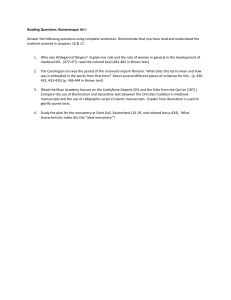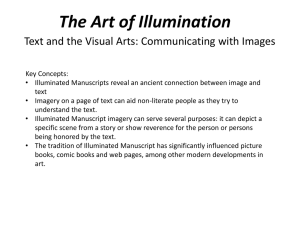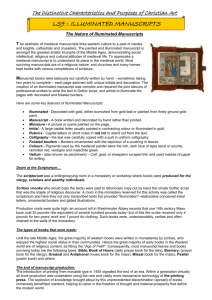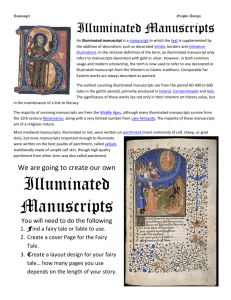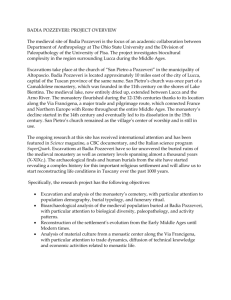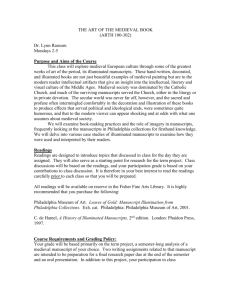Illuminate - Wilson School District
advertisement
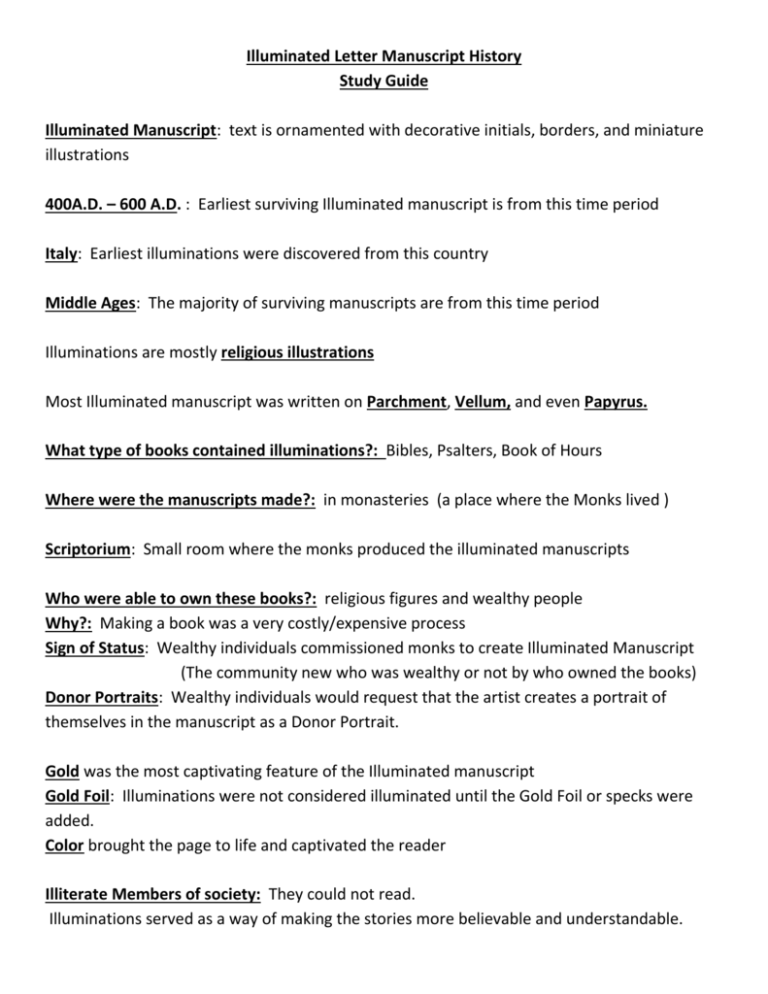
Illuminated Letter Manuscript History Study Guide Illuminated Manuscript: text is ornamented with decorative initials, borders, and miniature illustrations 400A.D. – 600 A.D. : Earliest surviving Illuminated manuscript is from this time period Italy: Earliest illuminations were discovered from this country Middle Ages: The majority of surviving manuscripts are from this time period Illuminations are mostly religious illustrations Most Illuminated manuscript was written on Parchment, Vellum, and even Papyrus. What type of books contained illuminations?: Bibles, Psalters, Book of Hours Where were the manuscripts made?: in monasteries (a place where the Monks lived ) Scriptorium: Small room where the monks produced the illuminated manuscripts Who were able to own these books?: religious figures and wealthy people Why?: Making a book was a very costly/expensive process Sign of Status: Wealthy individuals commissioned monks to create Illuminated Manuscript (The community new who was wealthy or not by who owned the books) Donor Portraits: Wealthy individuals would request that the artist creates a portrait of themselves in the manuscript as a Donor Portrait. Gold was the most captivating feature of the Illuminated manuscript Gold Foil: Illuminations were not considered illuminated until the Gold Foil or specks were added. Color brought the page to life and captivated the reader Illiterate Members of society: They could not read. Illuminations served as a way of making the stories more believable and understandable. Uses of the Medieval monastery A Medieval monastery was a farm, an inn, a hospital, a school and a library. The uses of a Medieval monastery included the following: A Medieval monastery received pilgrims and travelers, at a period when western Europe was almost destitute of inns A Medieval monastery performed many works of charity, feeding the hungry, healing the sick who were brought to their doors, and distributing their medicines A Medieval monastery provided education for boys who wished to become priests and those who intended to lead active lives in the world A Medieval monastery copied the manuscripts of classical authors preserving valuable books that would otherwise have been lost A Medieval monastery kept records of the most striking events of their time and acted as chroniclers of the medieval history of the Middle Ages Illumination comes from the word Illuminate which means to light up. Embellishment: Additional decorations that are added to enhance the page Parchmenter: the person that prepared the drawing and writing surface Scribe: The person that copied the information on the page Illuminator: The person who actually created the drawings/paintings and other decorations on the page
